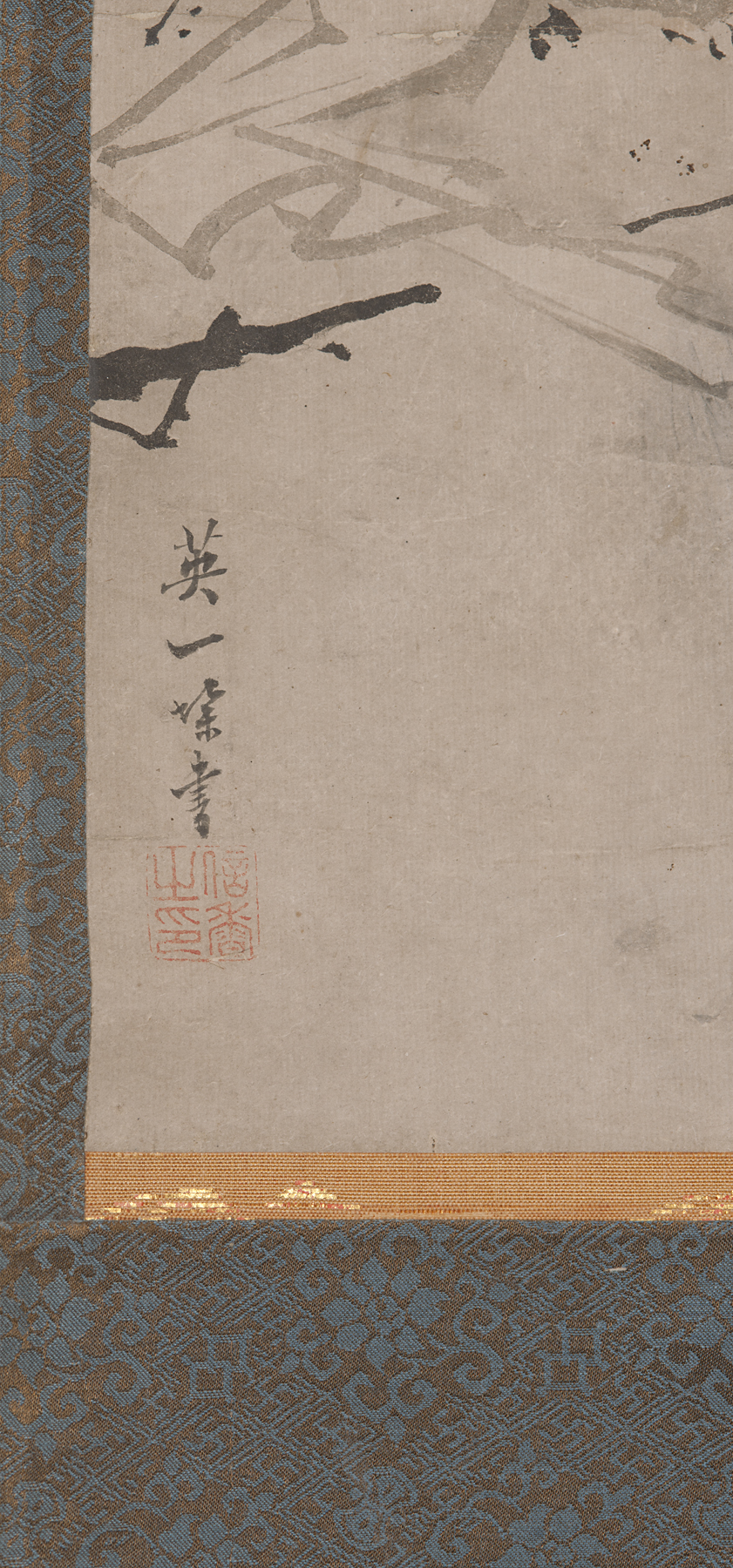Hotei gazing up at the Moon, Hanabusa Itchō
Artwork Overview
Hanabusa Itchō, artist
1652–1724
Hotei gazing up at the Moon,
circa 1709–1724, Edo period (1600–1868)
Where object was made: Japan
Material/technique: ink; paper
Dimensions:
Sheet/Paper Dimensions (Height x Width): 97.6 x 13.3 cm
Sheet/Paper Dimensions (Height x Width): 38 7/16 x 5 1/4 in
Mount Dimensions (Height x Width x Depth): 62 x 6 1/2 in
Roller Dimensions (Width x Diameter): 7 1/4 x 1 in
Sheet/Paper Dimensions (Height x Width): 97.6 x 13.3 cm
Sheet/Paper Dimensions (Height x Width): 38 7/16 x 5 1/4 in
Mount Dimensions (Height x Width x Depth): 62 x 6 1/2 in
Roller Dimensions (Width x Diameter): 7 1/4 x 1 in
Credit line: Museum purchase
Accession number: 1969.0041
Not on display
If you wish to reproduce this image, please submit an image request






